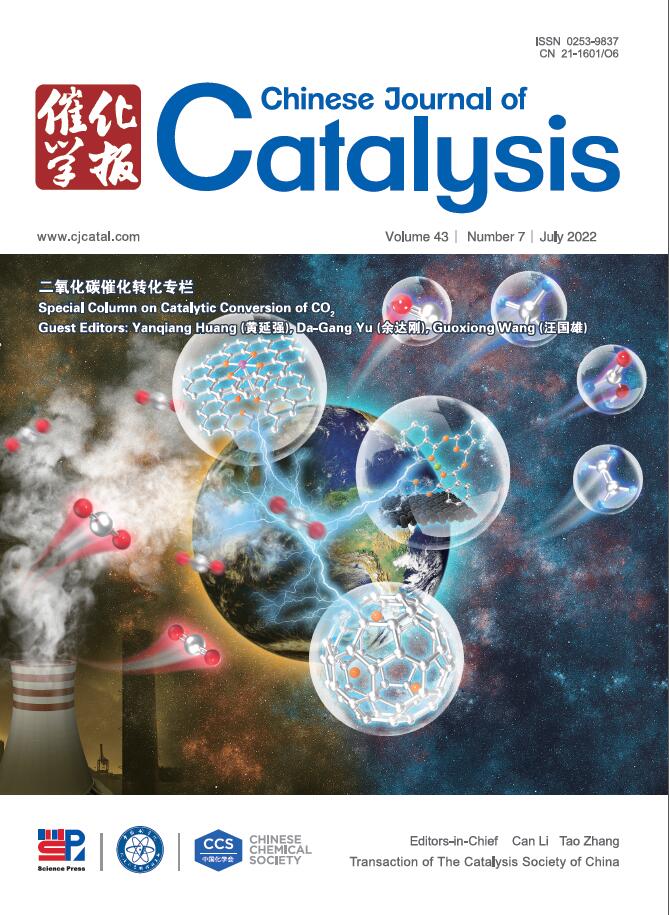Self-floating Bi4O5Br2/P-doped C3N4/carbon fiber cloth with S-scheme heterostructure for boosted photocatalytic removal of emerging organic contaminants
IF 17.7
1区 化学
Q1 CHEMISTRY, APPLIED
引用次数: 0
Abstract
The industrial implementation of Solar-driven photocatalysis is hampered by inefficient charge separation, poor reusability and hard retrieval of powdery catalysts. To conquer these drawbacks, a self- floating S-scheme Bi4O5Br2/P-doped C3N4/carbon fiber cloth (BB/PN/CC) composed of carbon fibers (CC) as the core and Bi4O5Br2/P-doped C3N4 (BB/PN) nanosheets as the shell was constructed as a competent, recyclable cloth-shaped photocatalyst for safe and efficient degradation of aquacultural antibiotics. The BB/PN/CC fabric achieves an exceptional tetracycline degradation rate constant of 0.0118 min‒1, surpassing CN/CC (0.0015 min‒1), BB/CC (0.0066 min‒1) and PN/CC (0.0023 min‒1) by 6.9, 0.8 and 4.1 folds, respectively. Beyond its catalytic prowess, the photocatalyst’s practical superiority is evident in its effortless recovery and environmental adaptability. The superior catalytic effectiveness stems from the S-scheme configuration, which retains the maximum redox capacities of the constituent BB and PN while enabling efficient spatial detachment of photo-carriers. X-ray photoelectron spectroscopy (XPS), in-situ XPS, and electron paramagnetic resonance analyses corroborate the S-scheme mechanism, revealing electron accumulation on PN and hole retention on BB under illumination. Density functional theory calculations further confirm S-scheme interfacial charge redistribution and internal electric field formation. This study advances the design of macroscopic S-scheme heterojunction photocatalysts for sustainable water purification.
s型异质结构自浮Bi4O5Br2/ p掺杂C3N4/碳纤维布促进光催化去除新出现的有机污染物
太阳能驱动的光催化的工业实施受到电荷分离效率低、可重复使用性差和粉末催化剂难以回收的阻碍。为了克服这些缺点,构建了以碳纤维(CC)为核心,以Bi4O5Br2/ p掺杂C3N4 (BB/PN)纳米片为外壳的自漂浮s型Bi4O5Br2/ p掺杂C3N4/碳纤维布(BB/PN/CC)作为可回收的布状光催化剂,用于安全高效地降解水产养殖抗生素。BB/PN/CC织物的四环素降解速率常数为0.0118 min-1,比CN/CC (0.0015 min-1)、BB/CC (0.0066 min-1)和PN/CC (0.0023 min-1)分别高出6.9倍、0.8倍和4.1倍。除了它的催化能力,光催化剂的实用优势是显而易见的,它的轻松回收和环境适应性。优异的催化效果源于s方案结构,它保留了组分BB和PN的最大氧化还原能力,同时实现了光载流子的有效空间分离。x射线光电子能谱(XPS)、原位XPS和电子顺磁共振分析证实了s方案机制,揭示了PN上的电子积累和BB上的空穴保留。密度泛函理论计算进一步证实了s方案界面电荷重分布和内部电场的形成。本研究提出了用于可持续水净化的宏观s型异质结光催化剂的设计。
本文章由计算机程序翻译,如有差异,请以英文原文为准。
求助全文
约1分钟内获得全文
求助全文
来源期刊

Chinese Journal of Catalysis
工程技术-工程:化工
CiteScore
25.80
自引率
10.30%
发文量
235
审稿时长
1.2 months
期刊介绍:
The journal covers a broad scope, encompassing new trends in catalysis for applications in energy production, environmental protection, and the preparation of materials, petroleum chemicals, and fine chemicals. It explores the scientific foundation for preparing and activating catalysts of commercial interest, emphasizing representative models.The focus includes spectroscopic methods for structural characterization, especially in situ techniques, as well as new theoretical methods with practical impact in catalysis and catalytic reactions.The journal delves into the relationship between homogeneous and heterogeneous catalysis and includes theoretical studies on the structure and reactivity of catalysts.Additionally, contributions on photocatalysis, biocatalysis, surface science, and catalysis-related chemical kinetics are welcomed.
 求助内容:
求助内容: 应助结果提醒方式:
应助结果提醒方式:


